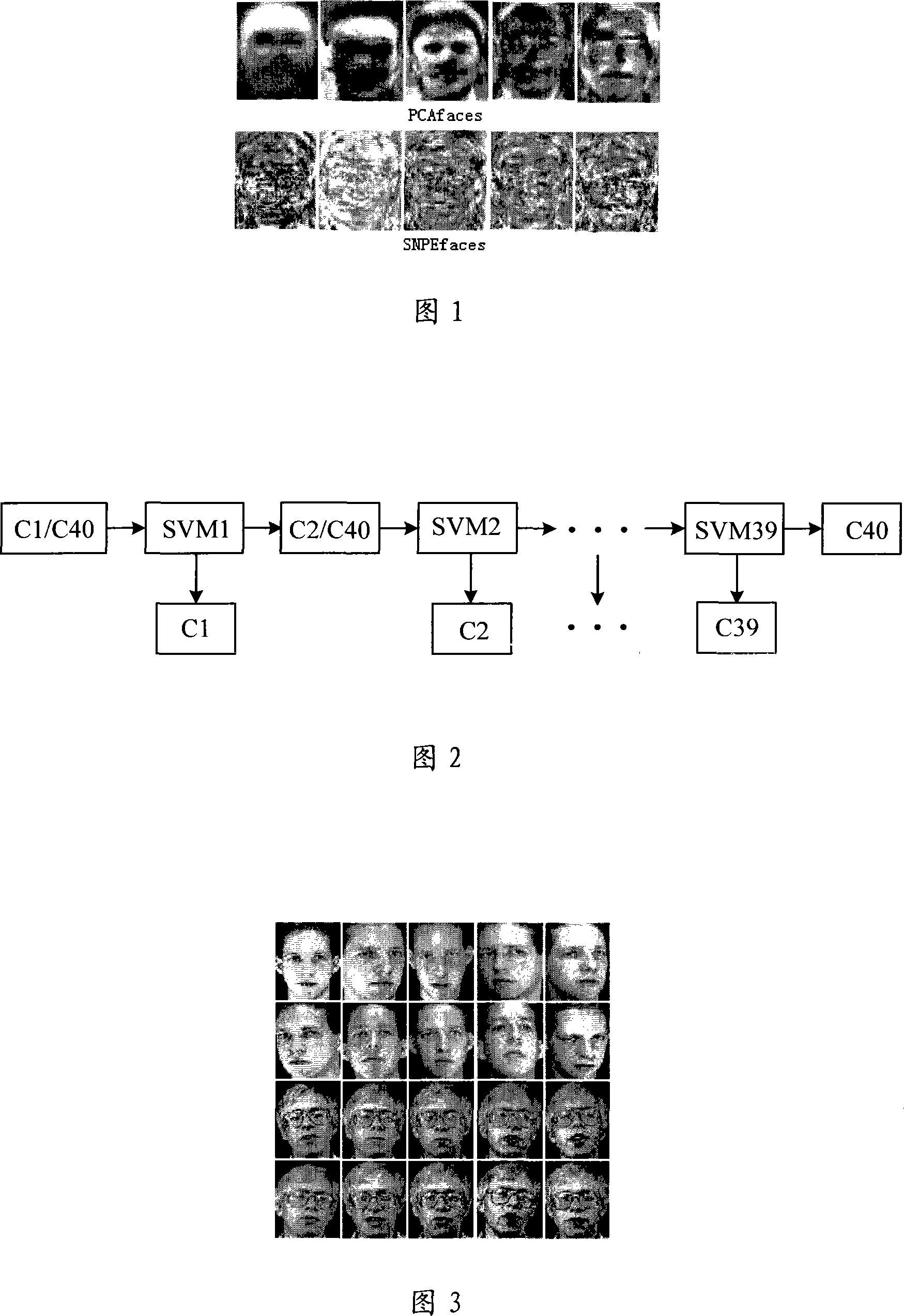Face recognition method based on supervisory neighbour keeping inlaying and supporting vector machine
A technology of support vector machine and face recognition, which is applied in face recognition of neighbor-preserving embedding and support vector machine. and other problems, to achieve the effect of reducing the amount of calculation and reducing the running time
- Summary
- Abstract
- Description
- Claims
- Application Information
AI Technical Summary
Problems solved by technology
Method used
Image
Examples
Embodiment Construction
[0037] Embodiments of the present invention will be further described in detail below in conjunction with the accompanying drawings.
[0038] At first introduce the basic design idea of the present invention:
[0039] 1. In terms of feature extraction, given a set of data samples in the surrounding space, first construct a weight matrix to describe the relationship between the data samples. For each data sample point, it is expressed by the linear combination of its adjacent data samples, and the combination coefficient constitutes a weight matrix. Then, find the optimal embedding so that this neighbor structure can also be kept in the low-dimensional space, and use the known category information and the number of samples in the class to determine the K value. This avoids the first step in the traditional Near Neighbor Preserving Embedding (NPE) algorithm, which can not only ensure the accuracy of K value selection, achieve optimal dimensionality reduction, but also greatly...
PUM
 Login to View More
Login to View More Abstract
Description
Claims
Application Information
 Login to View More
Login to View More - R&D
- Intellectual Property
- Life Sciences
- Materials
- Tech Scout
- Unparalleled Data Quality
- Higher Quality Content
- 60% Fewer Hallucinations
Browse by: Latest US Patents, China's latest patents, Technical Efficacy Thesaurus, Application Domain, Technology Topic, Popular Technical Reports.
© 2025 PatSnap. All rights reserved.Legal|Privacy policy|Modern Slavery Act Transparency Statement|Sitemap|About US| Contact US: help@patsnap.com



